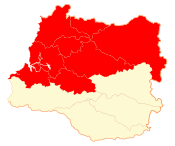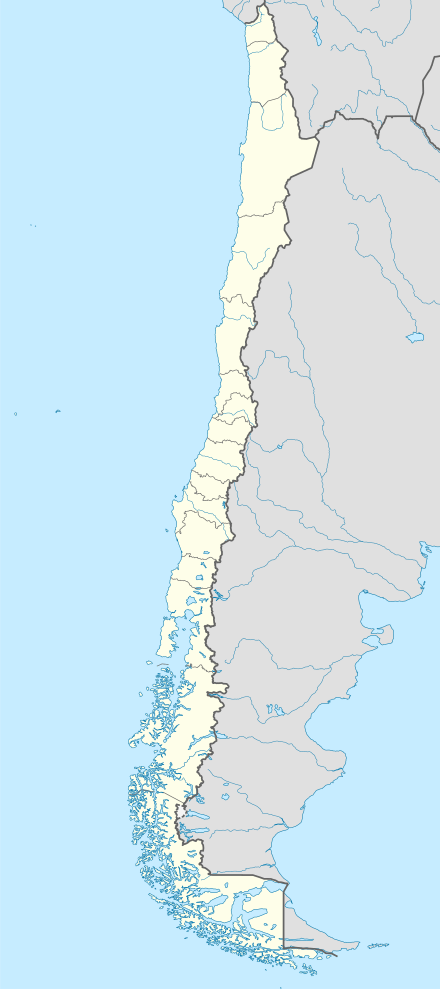Valdivia Province
Valdivia Province (Spanish: Provincia de Valdivia; pronounced [balˈdiβja]) is one of two provinces of the southern Chilean region of Los Ríos (XIV). The provincial capital is Valdivia. Located in the province are two important rivers, the Calle-Calle / Valdivia River and the Cruces River.It is part of Northern Patagonia and its wild virgin forest embrace the Patagonian Cordillera following the river Calle Calle down to the Pacific Ocean. It is known in Patagonia the term "Bosque Valdiviano" referring to the primitive forest of Valdivia with its native trees. These forests are present in some parts of Northern Patagonia, both in Chile and Argentina.
Valdivia Province Provincia de Valdivia | |
|---|---|
 Seal | |
 Location in the Los Ríos Region | |
 Valdivia Province Location in Chile | |
| Coordinates: 39°45′S 72°30′W | |
| Country | Chile |
| Region | Los Ríos |
| Capital | Valdivia |
| Communes | |
| Government | |
| • Type | Provincial |
| • Governor | María Jose Gatíca Bertín (RN) |
| Area | |
| • Total | 10,197.2 km2 (3,937.2 sq mi) |
| Population (2012 Census)[1] | |
| • Total | 272,527 |
| • Density | 27/km2 (69/sq mi) |
| • Urban | 192,066 |
| • Rural | 67,177 |
| Sex | |
| • Men | 128,972 |
| • Women | 130,271 |
| Time zone | UTC-4 (CLT [2]) |
| • Summer (DST) | UTC-3 (CLST [3]) |
| Area code(s) | 56 + 63 |
| Website | Government of Valdivia |
Geography and demography
According to the 2002 census by the National Statistics Institute (INE), the province spans an area of 10,197.2 km2 (3,937 sq mi)[1] and had a population of 259,243 inhabitants (128,972 men and 130,271 women), giving it a population density of 25.4/km2 (66/sq mi). Of these, 192,066 (74.1%) lived in urban areas and 67,177 (25.9%) in rural areas. Between the 1992 and 2002 censuses, the population grew by 10.9% (25,547 persons).[1]
References
- "Territorial division of Chile" (PDF) (in Spanish). National Statistics Institute. 2007. Retrieved 18 March 2011.
- "Chile Time". WorldTimeZones.org. Archived from the original on 2007-09-11. Retrieved 2010-07-28.
- "Chile Summer Time". WorldTimeZones.org. Archived from the original on 2007-09-11. Retrieved 2010-07-28.
